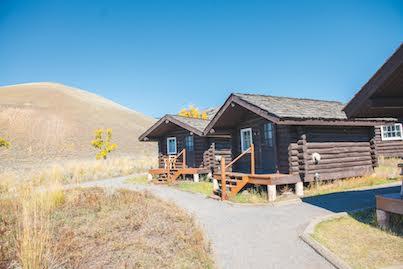
By Eliza Clark
In the not-too-distant past, sustainability leadership often meant an organization or individual was bold enough to sound the rally call to others. As the environmental movement has gained steam over the past decade, sustainability leadership has moved beyond advocating that environmental risks are real, to requiring real action and delivering real results.
But what does sustainability leadership look like if you are one of the 400 parks in the U.S. National Park Service? Five years ago, Yellowstone National Park launched the Yellowstone Environmental Stewardship (YES!) initiative, a collaborative effort to help Yellowstone become the world’s greenest park. The goals accomplished in this initiative offer lessons in successful sustainability efforts not just for other parks, but other organizations around the world.
Yellowstone set ambitious goals to improve its environmental performance. Using 2003 figures as the baseline, the park defined success as:
- 30 percent less greenhouse gas emissions
- 15 percent less electricity consumption
- 18 percent less fossil fuel consumption
- 15 percent less water consumption
- Divert 100 percent of municipal solid waste from landfills
Imagine applying those goals across the whole park – all 2.2 million acres of it, with nine visitor centers and museums, more than 2,000 hotel rooms and cabins, over 1,500 buildings, and well over 400 miles of roads – and the daunting scale grabs your attention. Even more daunting, perhaps, was the mission to educate and engage the estimated 4 million annual visitors and 16,000 staff.
That is why Yellowstone partnered with core group of public/private sector partners, including Andersen Corp., to help design and implement improvements and educational strategies to help meet its goals. These partners worked to help the Park drive significant improvements while reinforcing the powerful message that progress can also be realized by the collective, small efforts of the millions of people who set foot in the park each year. Just a few examples of Yellowstone’s sustainable building projects include:
Lamar Buffalo Ranch (right): In the Lamar Valley, where temperatures dip down to 40 degrees below zero in the winter months, the park replaced windows, upgraded insulation and installed programmable thermostats and new signage throughout the visitor cabins, amounting to a 50 percent reduction in energy use within the first 12 months.
Mammoth Clinic (above): This 1960s era building, open year-round, serves park staff and visitors, but a checkup of the building revealed retrofit opportunities that dramatically improved the building’s efficiency and energy performance.
Paintbrush: This employee dormitory located near Old Faithful is the first LEED Platinum building in the National Park Service. Home to 80 employees, Paintbrush embodies the Park’s whole-building approach to providing healthy, sustainable environments for its staff.
Canyon Lodge: This new lodging concept was designed to build visitor awareness of ways they can help sustain our natural environment. Educational opportunities are incorporated throughout the space, from waste sorting stations to tips about resource conservation.
Andersen was proud to support the YES! Initiative – both through our sustainability expertise as well as through products, helping park leaders reduce energy use while educating and inspiring the people of Yellowstone. Our company has been committed to preserving the view outside our windows for more than a century, so our shared values made the collaboration a natural fit. We believe our responsibility extends beyond designing sustainable products to partnering with others within and outside our industry to make a positive impact on our communities and world.
Like Yellowstone, we are proud of how much we have accomplished but are awed by how much there is still yet to do. The real success of Yellowstone’s efforts will be measured in the years to come, as future generations of park visitors and employees revel in the beauty of a glimpse of the world as it was at the beginning and embrace the responsibility we all share in preserving that view. Yellowstone and its partners have helped make YES a vibrant chapter in the park’s history – and have established a powerful model for bringing together collaborators to share expertise and solutions, catalyze innovation, and ultimately meaningfully reduce environmental impacts both within and beyond the boundaries of the Park.
Eliza Clark is Director of Sustainability and Environmental at Andersen Corporation.
TriplePundit has published articles from over 1000 contributors. If you'd like to be a guest author, please get in touch!














